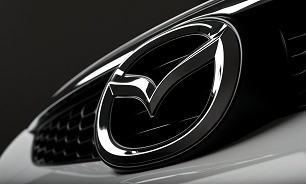Mazda turns to more virtual engineering to cut costs
Mazda Motor Corp. is cutting its reliance on physical vehicle prototypes and instead turning to virtual engineering in an urgent drive to stay competitive.

Khodrocar-The strategy, called model-based development, will take the forefront of Mazda's campaign to cut costs, speed lead times and channel sparse resources where they are needed most.
Managing Executive Officer Mitsuo Hitomi said the move will help Mazda juggle the massive complexity of new technologies on a shoestring budget.
He said 95 percent of the time-consuming calibration work on Mazda's next generation of vehicles will be done digitally on a desktop, rather than the traditional way of trial and error on pricey prototypes.
It uses desktop modeling for about 75 percent of its development work today, and relied on it for only 25 percent of the work in 2007.
"We have to expand this kind of approach," Hitomi said at a technology briefing last week. "There is no model, engine or transmission to which we haven't applied this model."
Mazda, a relatively small player on the world scene, couldn't have developed its upcoming Skyactiv X powertrain without the approach, he said.
Nor could it tackle a looming to-do list daunting even for a carmaker twice Mazda's size. By 2021, Mazda will introduce a plug-in hybrid, a new diesel engine, an electric vehicle, a connected-car system, automated driving technology, and a new body and chassis architecture.
For one of Japan's smallest automakers, with an r&d budget one-tenth the size of Toyota's, Mazda credits model-based development for helping it keep pace.
"It's really horrible because the amount of validation work just increased exponentially," said Tomohiko Adachi, Mazda's senior principal engineer for integrated control systems. "But after 2019, we will introduce all these things. That is how we will drive our business."
The "model" in model-based development refers to mathematical models, not to vehicle nameplates. Using computers to design and test complex components or vehicle systems relieves the company from making physical prototypes. It can save money, time and energy.
Mazda isn't alone in turning to model-based development. German automakers also have been leveraging the approach. But Mazda believes it is at the head of the pack. The Japanese automaker pioneered the strategy out of necessity back in 2004, Hitomi said.
At the time, Mazda was teetering on the brink of bankruptcy. It resorted to modeling to maximize its limited resources.
But the approach also enabled Mazda to develop the first generation of Skyactiv engines, transmissions and platforms used in its cars today.
"Since we were so strapped for money, we became advanced in this area," Hitomi said.
The approach isn't without its shortcomings. It can take as long as three days to precisely model the movement of a piston, Hitomi said. And engineers still haven't found a good way to translate the behavior of rubber into a model format.
But Mazda is expanding its use as much as possible and intends to use it on upcoming electrification projects, an area where carmakers are being pressured to quickly populate entire lineups with newfangled battery-powered drivetrains.
Mazda is encouraging partner companies, suppliers and universities in Japan to likewise adopt the approach to improve efficiency. It is also working with Japan's powerful Minister of Economy, Trade and Industry to promote model-based development.
"The benefits of model-based development," Hitomi said, "need to be communicated."
Source:autonews
Latest News


